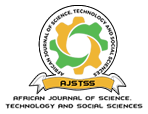Implementation of AI-Based Assistive Technologies for Learners with Physical Disabilities in Areas of Innovation and Special Schools: A Practical Design Thinking Approach
DOI:
https://doi.org/10.58506/ajstss.v1i2.124Keywords:
AI-based Assistive Technologies, Areas of Innovation, Design Thinking, Disabilities, eInclusionAbstract
The inclusion of Learners with disabilities continues to extensively rely on digital and Artificial Intelligence (AI) enabled Assistive Technologies (AT) as enablers for Persons Living with Disabilities (PWD). However, the provision of ATs to meet the unique needs of PWDs continues to be a challenge. Moreover, such AI enabled ATs exist within areas of innovations, learning and working environments, hence the need for ease of learning, usage and cost effective acquisition and implementation. This paper introduces a systematic approach that matches the unique needs and abilities of innovators and learners in areas of innovation and special schools with AI-ATs that supports innovation and learning of PWDs. This approach applies Design Thinking (DM) approaches, participatory elements enhanced with online collaborative tools in three special schools and one area of innovation through two training cycles. The objective is to be able to better understand the target group of learners and innovators with physical disabilities, to enable accurate identification, evaluation and choice of appropriate AI-ATs so as to develop learning and innovation spaces that enable the creation, introduction and testing of AI-ATs for eInclusion. The approach was developed for an area of innovation that focuses on ATs and Special Schools for adoption in diverse settings with PWDs.


